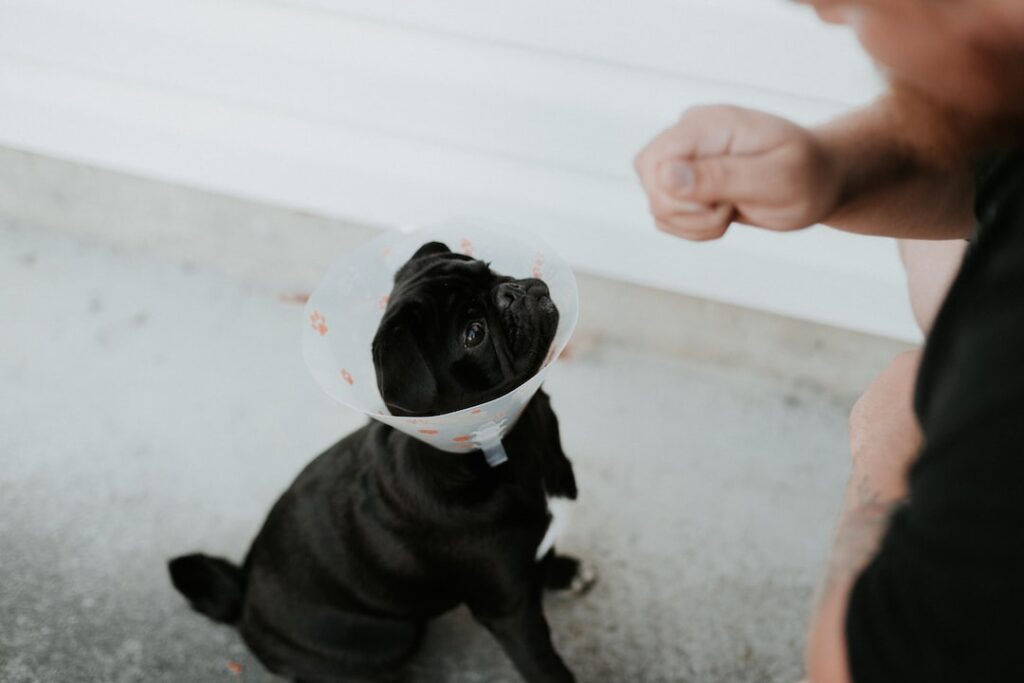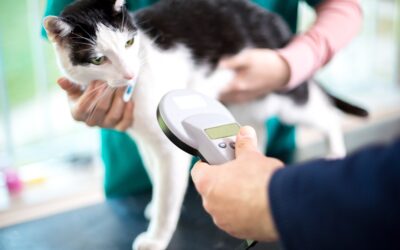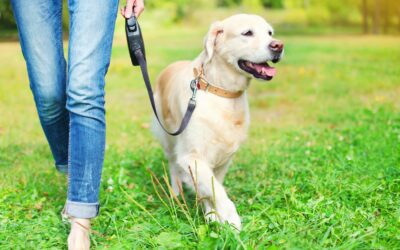
Regular veterinary check-ups are essential to ensure your dog is in good health. A typical veterinary check-up consists of listening to the heart, skin, and ears. Your vet may also examine your pet’s eyes, nails, and coat.
However, there are times when a dog needs a specific kind of surgery. This can strike fear and anxiety into the heart of any dog parent. It’s crucial to understand that vets only recommend dog surgery if they believe it would enhance your dog’s quality of life.
If your dog is preparing for their first surgery, it’s understandable to have questions or concerns. This article covers everything you need to know about dog surgery. Read on to learn more with our Westlake vets.
Types of Dog Surgeries
Not all surgeries are urgent, but some could still benefit your furry friend. Canine surgical procedures fall under three categories.
Elective Surgeries
Elective surgeries are non-urgent and are often planned. If a vet recommends elective surgery for your pet, you have time to research and weigh your options. A vet may recommend an elective surgery if they believe it’s crucial for your dog’s health and lifespan.
Here are the most common elective canine surgeries.
Spay and Neuter
Spay and neuter procedures prevent dogs from reproducing. Spays are for female dogs. A veterinarian will begin by cutting an incision below the belly button to access the abdomen.
From here, the surgeon will remove the uterus and ovaries, but some will only remove the uterus. Neuters are for male dogs.
A surgeon makes an incision in front of the scrotum before removing the testicles. Your dog should have limited activity following both procedures. Your dog can resume normal activity after 12-14 days when the incision has healed.
Benign Skin Growth
Did you know that dogs can develop warts? Oral papilloma is a common skin condition in dogs that causes them to grow warts around the mouth. Though unsightly, these warts are harmless and usually don’t cause the dog any harm.
In some cases, severe papilloma can cause a dog discomfort while eating or at rest. This is when a veterinarian might recommend a minor surgery.
Your dog will only need a topical ointment if the surgeon doesn’t remove any skin tissue. If there is a small piece of skin tissue removed, your dog might need sutures and temporary restrictions on activity.
Dental Extraction
Your dog might need a dental extraction if they have a loose or broken tooth. Young dogs might also need a dental extraction if their baby teeth don’t fall out by themselves. This ensures that your young dog has room to develop healthy permanent teeth.
Some dogs also develop orthodontic abnormalities which require surgery. After the procedure, you must only feed your dog softened food and allow them to rest. Incisions in the mouth should heal after two weeks.
Semi-elective Surgeries
Semi-elective surgeries treat conditions that aren’t emergencies but could develop into one. These surgeries are more urgent, but you still have time to explore other options.
Urgent Dog Surgeries
Urgent surgeries, or obligatory surgeries, are often lifesaving and crucial. After stabilizing your pet, your veterinarian will bring them in for surgery. These are the most common urgent surgeries in dog hospitals.
Bladder Stone Removal
Dogs can develop bladder stones if they have diabetes or a high pH level in their urine. Poor diet or certain medications could increase the risk of developing bladder stones. This procedure helps to eliminate crystals and stones blocking the urethra or bladder.
To start, the surgeon places a urinary catheter to prevent stones from entering the urethra. The surgeon creates an incision in the lower abdomen and starts removing the crystals or stones.
They might have to flush the bladder multiple times to get rid of any residue from stones or crystals. The dogs are then hospitalized for a few days to monitor their appetite and urination. If there are any sutures, you will have to go back after 14 days to have them removed.
Open Abdominal Exploratory Surgeries
Dogs love to explore new things with their mouths. Unfortunately, they sometimes end up swallowing something they aren’t supposed to. In most cases, your vet will tell you to let it pass and wait and see if it comes out in your dog’s poop.
However, if your dog starts exhibiting abnormal behavior, take them to the vet ASAP. Foreign objects can get stuck anywhere in your dog’s gastrointestinal tract. A blockage can restrict blood flow, which can be dangerous for your pet.
This procedure requires hospitalization of at least a few days. The surgery involves cutting a large incision that runs the entire length of your dog’s abdomen. Hospitalization is to ensure that there’s no leakage along the surgical site.
After discharge, you must confine your dog for at least 14 days. You will return to the vet after 14 days to have any external sutures removed.
Orthopedic Surgery
Orthopedic surgeries are for bone fractures. Equipment used may vary depending on the severity, location, and type of fracture. Younger dogs or dogs with stable fractures may only need a cast or splint.
Some fractures will only need the help of pins, screws, and plates. However, an open fracture (when the bone sticks out of the skin) may require external skeletal fixation.
Regardless of the severity of the fracture, your dog will be confined for at least six to eight weeks. After that, your dog will have two to four weeks of rehabilitation and a gradual introduction to activity. Your vet may prescribe antibiotics or painkillers.
Skin Lacerations, Abscesses, and Wounds
Severe lacerations and abscesses will require drainage and sutures to close the wound. Your vet will thoroughly clean the area and remove any damaged tissue if needed. Your dog may need a drain if they suspect the risk of fluid build-up under the skin.
After that, the vet will close the injury. You must not allow your dog to run, jump, or play after the surgery. Your vet may prescribe you a saline solution.
You will need this to flush the incision site and keep it clean. If your dog has any sutures, you will return after 14 days to have them removed.
In some cases, the wound may be too large or too damaged for surgical closing. If this happens, you will need to bandage the area until the site heals. This may take between four to eight weeks, depending on the severity of the wound.
Always follow your vet’s instructions, and don’t miss bandage change appointments.
Anesthesia for Dogs
Vet visits can be stressful for a dog, but even more so when they’re sick or in a lot of pain. Anesthesia is often used to help vets perform necessary surgeries. The type used may vary on your dog’s situation and the vet’s opinion.
Local Anesthesia
If your dog doesn’t need to be unconscious for a procedure, your vet may use a local anesthetic. This will temporarily block nerve sensations so your dog won’t experience pain.
This is often used for dental procedures. However, since dogs are unlikely to remain still, your vet may opt for sedation.
Pre-anesthetic
Pre-anesthetics are mild sedatives administered to prepare a dog for surgery. Acepromazine is the most popular, but there are many other similar drugs that are as effective.
Induction Anesthetic
Induction anesthetics are fast-acting and make way for more powerful anesthesia. Propofol is the most popular because it works quickly and smoothly. It’s why many veterinary surgeons use it to prepare a dog for general anesthesia.
However, like pre-anesthetics, there are plenty of other alternatives.
Inhalant Anesthesia
After administering induction anesthesia, the vet will proceed with a more potent anesthetic. Isoflurane is the most common, but more vets are using a newer agent known as sevoflurane.
Your vet will monitor your dog’s vitals while your pet is under sedation. If you’re concerned about how your dog will react to the anesthesia, talk to your vet and ask what monitoring methods they use. This will give you some peace of mind, especially if your dog is undergoing major surgery.
Preparing Your Dog for Surgery
Before any kind of surgery, your dog will need to complete a few prerequisites. This will help determine if they are viable for surgery or what anesthetics should be used.
Medical History and Physical Exam
Your dog will first undergo a physical exam to determine any risk factors. Your vet will also need access to your dog’s old medical records. Older dogs or dogs with certain conditions may have a higher risk of complications during surgery.
A physical exam involves a visual inspection of your dog’s eyes, ears, mouth, and body. Your vet may also need to feel around your dog’s body to identify any abnormalities in their skin or muscles. This will also help them examine your dog’s organs, like their kidneys, intestines, and liver.
Your vet will also listen to your dog’s heart, lungs, and gastrointestinal system using a stethoscope.
Pre-anesthetic Tests
Young dogs, senior dogs, and certain breeds have a higher risk of reacting to anesthesia. Your dog will undergo some pre-anesthetic tests to detect the possibility of complications.
The first is a Complete Blood Count. This will analyze your dog’s number of red blood cells, white blood cells, and platelets.
The CBC will also uncover details about their size, shape, and abnormalities, if any. If your dog is deficient or has abnormal cells, your vet will need to delay the surgery until they can address the problem.
A serum biochemistry profile helps the vet determine the health of your dog’s organs. This will also help them identify whether your dog has any metabolic disease.
Your vet may also use any special tests if your dog has underlying health problems. This may include an EKG, imaging, thyroid testing, or urinalysis.
What You Should Do
If your dog has any allergies, be sure to let your vet know beforehand. It’s also crucial to let your vet know if your dog has had any reaction to anesthesia in the past. This will reduce the risk of complications during any part of the surgical process.
Your veterinarian will also ask you not to feed your dog 12 hours before the procedure. This will reduce the risk of your dog aspirating fluid or food into their lungs. It would also help to bathe your dog since you won’t be able to groom your dog for at least two weeks after surgery.
Post-surgery Dog Care
Symptoms such as grogginess or lethargy are natural and will usually go away when the anesthesia wears off. If your dog used an IV or catheter, it may have some bruising around the area.
Dogs recover from anesthesia within 12 to 48 hours. If your dog is still exhibiting strange behavior, let your vet know.
Your dog may also have a temporary loss of appetite. This should return after 24 hours, but you can feed your dog a half-portion of their regular meals. If your dog still refuses to eat after 48 hours, contact your vet.
How to Help Your Dog Recover
After dog surgery, it’s crucial to follow all your vet’s instructions. Always give your dog their medicine and change their bandages when needed. You may put them in a cone to stop them from licking and potentially infecting a surgical site.
After most major surgeries, you will need to avoid heavy exercise until the incision site has healed. You may take your dog on walks only for bathroom purposes.
Finally, you should stay close to your dog and give them plenty of love and affection. Your dog might be feeling confused and hurt. Knowing their favorite human is around can help them heal.
Where to Find a Veterinary Near Me for Dog Surgery
If you’re considering dog surgery, here’s everything you need to know to prepare yourself and your dog for the process. Surgery can be scary, but it’s often necessary for your dog’s health and well-being.
If you’re looking for a vet near me, Slaton Veterinary Hospital offers the highest quality pet care. Schedule an appointment with us at our Thousand Oaks vet location today. We also accept emergency and walk-in appointments.








